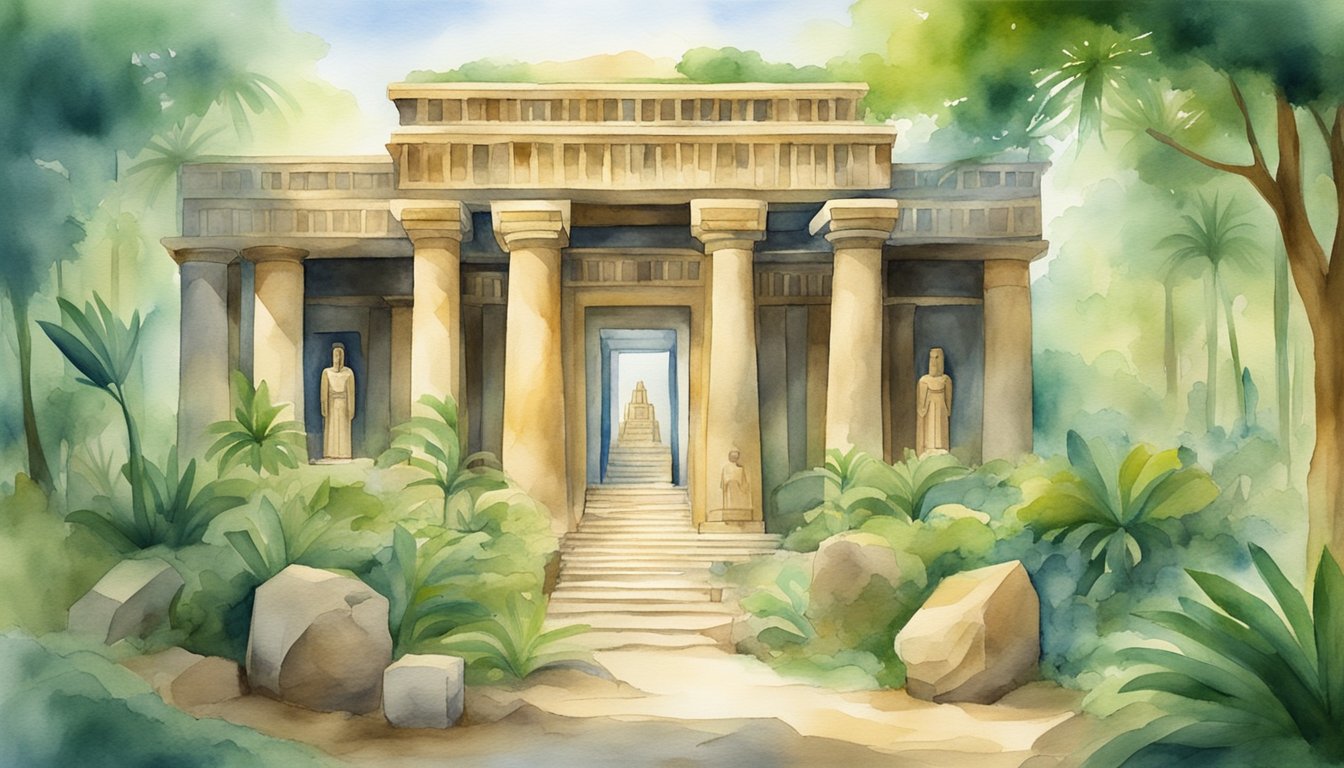Kemetic spirituality is a path I stumbled upon after years of exploring the metaphysical landscape, looking for something that resonated with a deeper truth.
It’s a revival of the ancient Egyptian spiritual practices and concepts, a tradition that speaks to the soul with its rich symbolism, reverence for nature, and the divine.
In a world where spiritual authenticity is often commercialized, I found Kemetic spirituality to be a breath of fresh air, a system that has survived the sands of time and still holds profound relevance.
New: Ask the Angel!
As a numerologist, I’ve always seen numbers as the undercurrent of the universe, and in Kemetic spirituality, the harmonious nature of the cosmos is similarly recognized through the principle of Maat.
This key element reflects balance, order, and truth in all aspects of life.
Through my practice, I’ve learned that mainstream spirituality often paints an incomplete picture, sometimes even missing the mark entirely.
Kemetic spirituality, however, empowers individuals to engage with the divine in a manner that is personal and rooted in the wisdom of the ancients.
In my own experiences, the practices and rituals of Kemetic spirituality have provided a framework for understanding the essence of our existence beyond the mundane.
The guidance of the Neteru, the deities of Kemet, can be seen as metaphors for natural forces and human experiences, offering insights that have helped me navigate life’s complexities with greater clarity and purpose.
This spirituality isn’t just about rites and ceremonies; it’s about embodying the principles that have withstood the test of time to lead a balanced and harmonious life.
Key Takeaways
- Kemetic spirituality offers a spiritual path grounded in ancient Egyptian practices.
- The concept of Maat in Kemetic spirituality emphasizes balance and order.
- Practices and rituals in Kemetic spirituality can provide clarity and purpose.
Origins and Principles of Kemetic Spirituality

Kemetic Spirituality reflects a holistic approach I’ve found has roots older than many recognize, and its principles are relevant today as avenues to personal enlightenment.
Historical Context
Diving into the history, I’ve learned that Kemetic Spirituality originates from ancient Egypt, a civilization that thrived along the Nile.
I often explain that unlike the common perception of ancient Egyptians being obsessed with death, their spirituality was deeply woven into their appreciation for life and the natural order.
Core Philosophies
As for the core philosophies of Kemetic Spirituality, they revolve around concepts I’ve resonated with deeply: balance, order, and truth.
In my studies and practice, I’ve uncovered that these principles aren’t just ancient history—they’re timeless ideas that guide me in a chaotic world.
-
Order (Ma’at): This is about harmony with the universe. From my experience, aligning with Ma’at is aligning with what’s just and right.
-
Balance: In my pursuit of balance, I focus on maintaining spiritual equilibrium. It’s challenging in a society that’s often out of sync with natural laws.
-
Justice: It’s about reciprocal relationships, not punitive actions. I’ve discovered this often gets misinterpreted in the mainstream narrative.
-
Truth: Living authentically is not as common as you’d think. In my journey, seeking truth has always been at the forefront—never an afterthought.
In conclusion, embracing these tenets has continually proven to be transformative in my life.
It’s not about following the crowd—it’s about the genuine search for harmony with the self and the universe.
These aren’t just principles; they’re a way of life.
Practices and Rituals in Kemetic Spirituality

In Kemetic Spirituality, rituals and practices are not just routine; they are a profound engagement with the divine.
Trust me, it goes beyond lighting a few candles and reciting verses; it’s about embodying the ancient Egyptian principles in our daily lives.
Modern Adaptations
I’ve found that adapting ancient practices to fit our contemporary lifestyle is crucial.
We’re not all living by the Nile, waiting for the inundation to bless the crops.
Instead, I sync my daily meditations with the rising sun, honoring Ra’s journey across the sky.
It’s about infusing the archaic with the modern pulse of life, making the rituals personally transformative.
The practice of creating altars, for example, is not just about statues and offering bowls.
It’s a space I prepare in my home where the essence of Netjer—the gods—can manifest.
I’ve observed how these spaces become power spots in my home, with each one tuned to different deities like Isis, Thoth, or Sekhmet.
By doing so, I connect with the aspect of spirituality that surpasses mere belief and enters tangible experience.
Ceremonies and Offerings
Ceremonies and offerings are the lifeblood of Kemetic practice.
But let me tell you, it’s not about lavish gifts or grandiose gestures.
It’s the intention; a simple piece of bread can symbolize the sustenance of life, and clear water can embody purity and renewal akin to the annual flooding of the Nile.
I’ve personally witnessed the power of consistent offerings—they align my life with the divine order, or Ma’at, and open up channels of communication with the divine.
It’s as if with each offering, I’m stitching the fabric of the seen and unseen realms together, and let me stress—this is a profound connection that has to be experienced to be truly understood.
Through observing these practices and rituals, my experience with spirituality has deepened, becoming a living, breathing part of my daily existence.
It’s apparent to me that spirituality isn’t something you learn from books or adopt from hearsay; it’s a deeply personal journey that reshapes you from the inside out.
And Kemetic rituals are the vessels for this transformative voyage.




